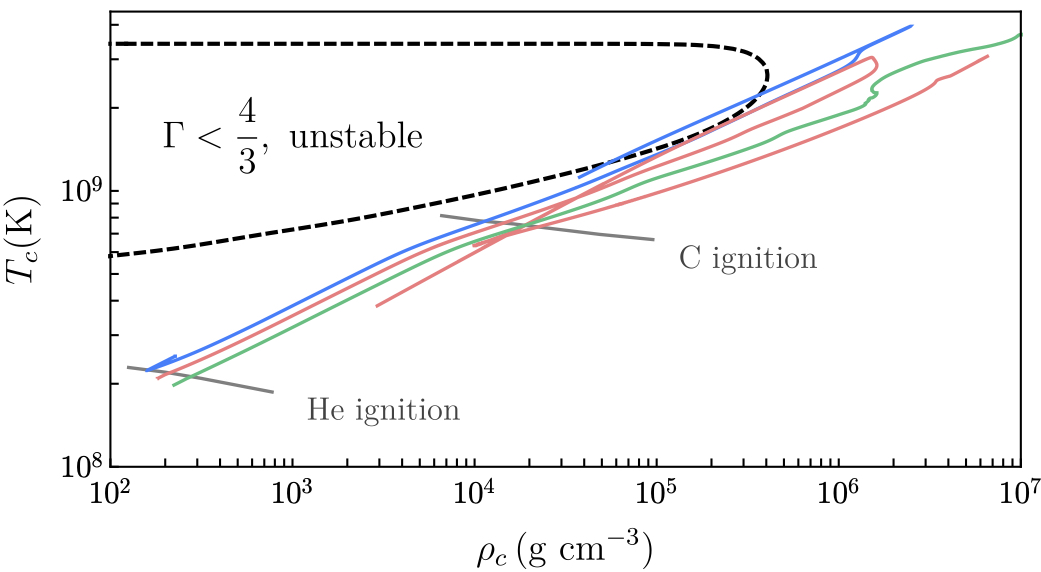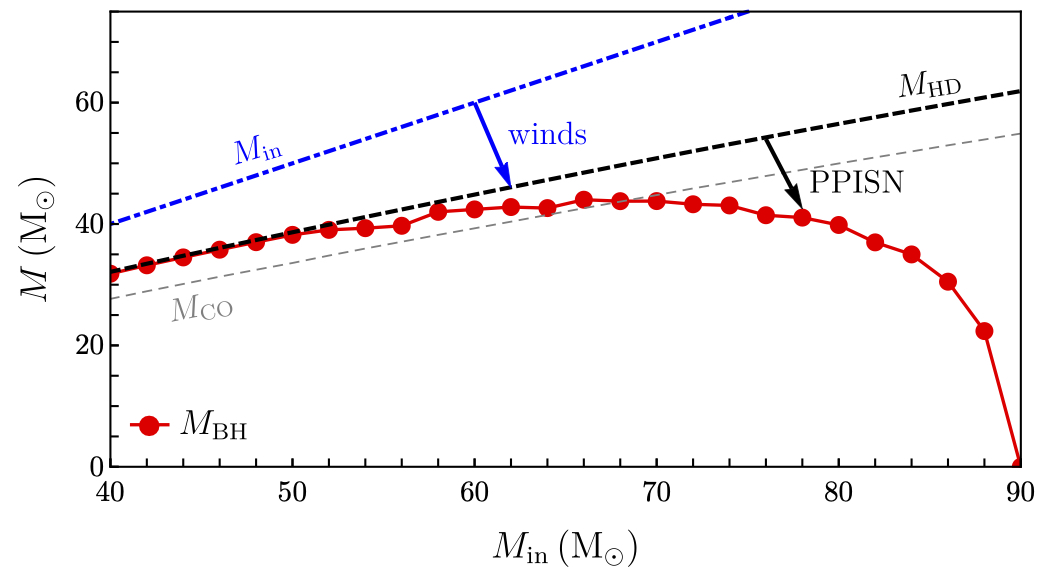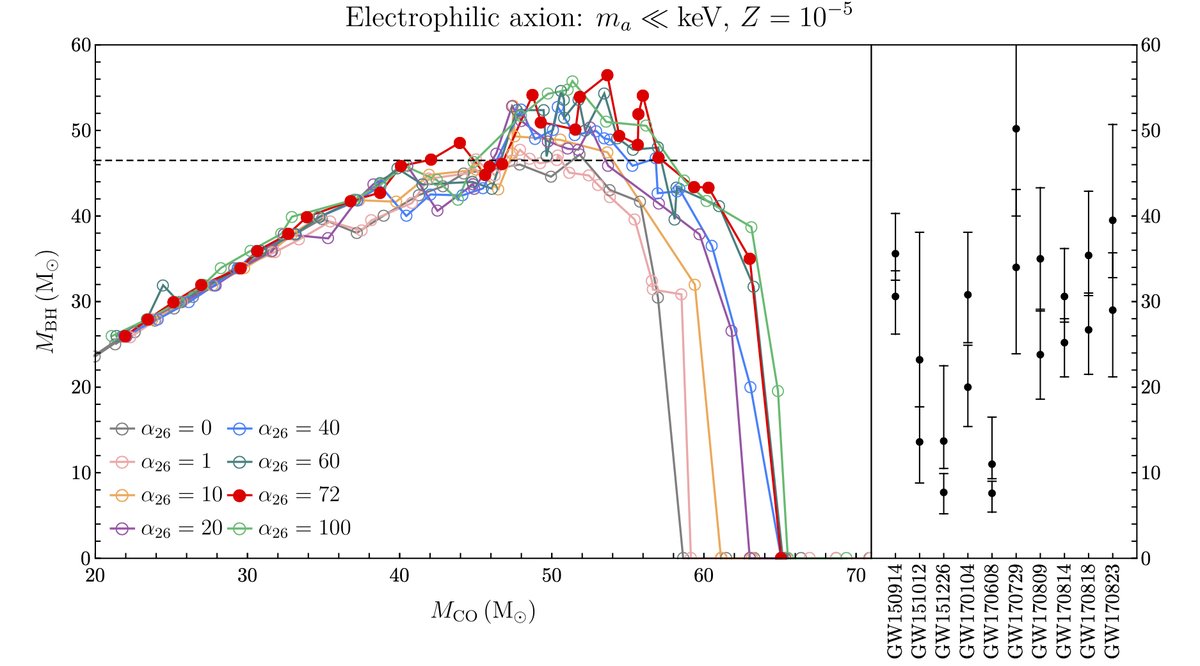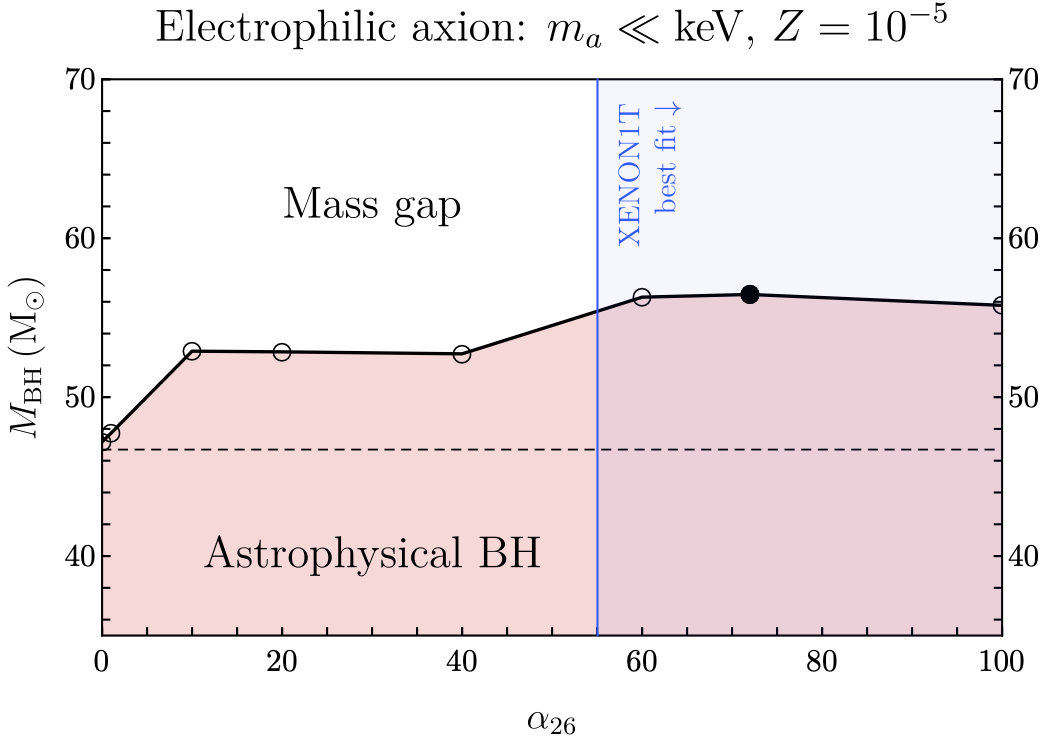New paper!
https://arxiv.org/abs/2007.00650
Missing in Axion: where are Xenon1T's big black holes?
with two absolute legends: Sam McDermott and @JeremySakstein
We pioneer the black hole mass gap as a powerful new tool for constraining new particles.
Thread:
https://arxiv.org/abs/2007.00650
Missing in Axion: where are Xenon1T's big black holes?
with two absolute legends: Sam McDermott and @JeremySakstein
We pioneer the black hole mass gap as a powerful new tool for constraining new particles.
Thread:
1/ The detection of gravitational waves by @LIGO and @ego_virgo affords us the unprecedented opportunity to examine celestial objects under a new microscope, and to test our theories of nature using the most extreme objects in the universe: black holes.
2/ As gravitational wave astronomy enters the realm of precision science, the large volume of detected mergers will become a sensitive probe of the astrophysical populations of black holes: the remnants of supernovae explosions at the end of the lives of heavy stars.
3/ We propose, for the first time, to use black hole population studies to probe new light particles. In particular, we show that they may probe the currently very popular electrophilic axion, which may explain the excess measured in the @XENONexperiment. Huh, but how?
4/ Well, it turns out that stellar structure theory predicts the existence of a black hole MASS GAP. That is, there is a large range of masses for which black holes just cannot be formed. To see why, you need to consider the final chemical burning stages of a very heavy star.
5/ This image shows the evolution (starting at the bottom, moving to the top) of the temperature and density of three different stars: of 40 solar masses (green), 70 solar masses (pink), and 120 solar masses (blue). The figure also shows a dashed "danger zone".
6/ What is this danger zone (labeled unstable)? If a star comes near it, the production of electron-positron pairs from the hot plasma is so fast, that the star cannot be supported by radiation pressure anymore and will start to IMPLODE prematurely.
7/ So, what happens to our example stars? As you can see, the 40 solar mass star (the green line) does not come near the danger zone, and proceeds as normal. This star will eventually become a black hole.
8/ The 70 solar mass star grazes the zone, and starts to fluctuate. What happens is a sequence of implosions and thermonuclear explosions, shedding mass at every step. We call it a pulsation pair-instability supernova (PPISN) - it results in a lighter black hole.
9/ The 120 solar mass star (blue line) enters the danger zone, and the subsequent implosion triggers such an energetic thermonuclear explosion, that all of the material is blown away. This is called a pair-instability supernova (PISN), and it results in NO REMNANT.
10/ This image shows the masses of heavy stars vs. the masses of their black hole remnants. From the y-axis, you can read off that there is a maximum black hole mass of about 40 solar masses. Above that, nothing. This is therefore the lower edge of the mass gap.
11/ If we would have continued this figure to the right, eventually there would be larger black holes again, of about 120 solar masses and upwards: these define the upper edge of the mass gap.
12/ The mergers detected by @LIGO and @ego_virgo allow us to study masses of black holes in binaries. With that data, we may test our understanding of the mass gap, and therefore of stellar structure theory and nuclear physics. We cited some pioneering papers, check them out!
13/ But, as we show here for the first time, we may also use it to test our understanding of particle physics. In particular, if new light particles exist and couple to the material in the star, they will change its final stages.
14/ Such particles will act as an additional way to lose energy, accelerating the processes in the supernova in such a way that the pair-instability pulsations become less violent. Therefore, you would expect bigger black holes, within the original mass gap.
15/ And indeed, performing simulations with the MESA code, that is what we find. Look in particular at the red line and dots, which correspond to the characteristic new particle suggested by the XENON1T experiment.
16/ On the right of this plot, we also show the black hole masses inferred from the first two observing runs of the LIGO/Virgo experiments, with their error bars. It it seen that both the standard and the axion case are currently consistent, but we will know more soon.
17/ Here is a clearer image of the mass gap, with the strength of the coupling between axions and electrons on the x-axis. It also shows the region with which the XENON1T excess can be explained. The difference is ten times the mass of the sun - that's huge!
18/ So, we have shown that new particles can be tested through the masses of black holes. Isn't that cool? We demonstrated the effect with XENON1T's electrophilic axion that is on everyone's mind right now. But that is not all...
19/ WE CAN LEARN SO MUCH MORE FROM THIS. Stay tuned for another work, in which we will explore several other effects of new physics in detail, which will appear VERY SOON. And we have so many other things in mind!
20/ To note, the LIGO/Virgo third observation run has observed many more black hole mergers. When that data gets released, we can learn even more. With the next generation of gravitational wave detectors, the situation will get yet better. THE SKY IS THE LIMIT!

 Read on Twitter
Read on Twitter





